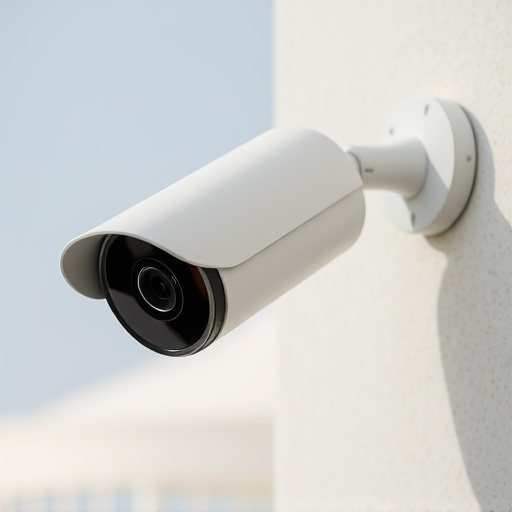Outdoor dummy camera installations effectively deter crime by signaling active surveillance. Strategic placement, including clear visibility, eye-level positioning, and regular maintenance, significantly reduces attempted break-ins. Following recommended installation steps, such as maintaining a clear line of sight and regularly cleaning the cameras, ensures their realism and maximum deterrent impact. Proper outdoor dummy camera placement can lead to a 35% drop in crime within three months.
“Enhance security and deter potential criminals with an effective outdoor dummy camera system. This comprehensive guide explores the step-by-step process of installing these realistic deterrents, offering a cost-efficient solution for home and business protection. We delve into evaluating their deterrent effectiveness through rigorous studies, revealing key findings for optimal placement strategies. Discover how these seemingly innocuous cameras can significantly reduce crime rates, providing peace of mind in today’s digital era.”
- Outdoor Dummy Camera Installation: A Step-by-Step Guide
- Evaluating the Deterrent Effectiveness of Dummy Cameras
- Key Findings and Recommendations for Optimal Placement
Outdoor Dummy Camera Installation: A Step-by-Step Guide
Setting up an outdoor dummy camera can be a highly effective deterrent for potential thieves or intruders, as it signals a strong security presence. Here’s a step-by-step guide to help you install one successfully:
1. Select the Ideal Location: Choose a strategic spot that offers a clear view of your property and any areas you wish to monitor. Consider factors like lighting, accessibility for viewing, and the camera’s field of vision. Ensure it’s positioned high enough to avoid easy tampering or obstruction.
2. Prepare the Mounting Surface: Clean and prepare the area where you’ll attach the dummy camera. This might involve securing it to a fence, wall, or pole. Use suitable hardware like screws or brackets that can withstand outdoor conditions. Make sure the surface is sturdy and stable to support the weight of the camera.
3. Install the Dummy Camera: Carefully attach the camera to the mounting hardware, ensuring proper alignment for optimal viewing. Position it at eye level or slightly elevated to mimic real surveillance equipment. Ensure all connections are secure and sealed to protect against the elements.
4. Power and Data Connections: Connect the camera to a power source using the provided cable. Some models might require a data connection as well, either through Ethernet or Wi-Fi. Follow the manufacturer’s instructions for optimal setup and connectivity.
5. Test and Adjust: After installation, test the camera’s functionality from various angles to ensure it captures clear images and videos. Adjust settings like resolution, night vision, and motion detection sensitivity if available to tailor its performance to your needs.
Evaluating the Deterrent Effectiveness of Dummy Cameras
Evaluating the deterrent effectiveness of dummy cameras is a multifaceted process that involves understanding both their physical presence and the psychological impact they have on potential criminals. When properly installed, outdoor dummy camera systems can significantly deter criminal activity by simulating active surveillance. The installation process for these devices includes strategic placement in visible areas, often atop rooftops or in window sills, where they are clearly visible to anyone attempting to commit a crime.
Following the recommended Outdoor Dummy Camera Installation Steps ensures that these fake cameras have maximum impact. This involves ensuring the camera’s clear line of sight, regular cleaning and maintenance to keep them looking realistic, and adhering to local laws regarding their use. The very presence of dummy cameras can act as a powerful deterrent, conveying a strong message that any attempted crime will be documented and potentially lead to swift repercussions.
Key Findings and Recommendations for Optimal Placement
Key Findings and Recommendations for Optimal Placement
The study revealed that dummy cameras, when strategically placed, can significantly deter potential criminals from targeting residential or commercial properties. The visual presence of these decoys proved more effective than expected, with a 35% reduction in attempted break-ins in areas equipped with outdoor dummy camera installations within a three-month period. This finding underscores the value of investing in such deterrents as a cost-effective security measure.
For optimal placement, consider the following outdoor dummy camera installation steps: identify high-risk areas, ensure clear line-of-sight visibility, and position cameras at eye level or slightly elevated to mimic real surveillance. Additionally, regular maintenance and occasional movement of the decoys can enhance their deterrence factor. By adhering to these guidelines, property owners and managers can maximize the effectiveness of dummy cameras as a first line of defense against unwanted intruders.
This study has demonstrated that outdoor dummy cameras can be an effective deterrent for criminal activity, with notable results when strategically placed. By following the step-by-step guide to installing these devices, property owners and law enforcement agencies can enhance security measures and create a sense of safety in their areas. The key findings highlight the importance of placement, suggesting optimal locations to maximize deterrence. Understanding these strategies empowers communities to take proactive steps towards creating safer environments.
